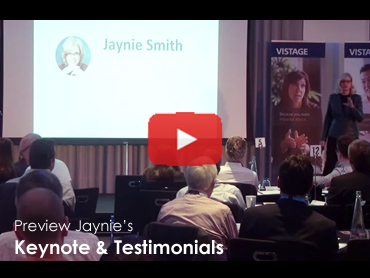Affluent Magazine: Attracting and Retaining Good Salespeople: It’s Not About Them, It’s About the Company
Recently I decided to upgrade my Palm Treo and, rightfully, feared what an undertaking it would be. (A techno geek I am not).
The salesperson at the phone store was bright and eager to solve my problems. Unfortunately, I had a “lemon product.” I have, to date, spent nine hours at his counter (and I’m not done yet.)
Here’s the point: the salesperson was reprimanded repeatedly by his manager for helping me. “We are not supposed to do this,” the salesman said. “We are told to wait on new customers and make new sales.”
He then lamented, “But if I don’t help you and others, then you will return the product and no one wins.” He told me his friend worked at a competitor and got in trouble if he did not help the customer.
“You won’t be here long, will you?” I asked. He told me he was already working on his resume and had only been there four months. “Management doesn’t understand the customer. They don’t listen to feedback from the customer on the products. They make bad management decisions, such as keeping the store open on Sundays with a consistent record of no traffic, when we have another store one mile away.”
In an earlier column, I talked about how important competitive advantages are to the profitability of a company. They answer the question “why us?” Why should I buy from you and not your competition? Good sales people can smell a company that can answer that question well, and may explain why the better sales people seem to wind up with the better companies.
I speak to CEO and executive groups nationwide and am continually told that their sales managers complain the sales staff wants them to “lower the price” so they can sell more. That is a common cry. However, when a company creates, measures and maintains strong competitive advantages that are most valued by the customer, that company will attract the very best salespeople and customers. It starts with strategic decisions and operational changes that make a difference.
In my book, Creating Competitive Advantage, (Doubleday, 2006) I devote a chapter to what I call “Dangerous Disparity.” This gap between what your customer prioritizes and what you offer affects your bottom line and retention (customer and employee) rate. There are several Dangerous Disparities that can topple a company:
- Use imprecise, vague language that customers don’t notice, believe, or understand. Sometimes the sales message is loaded with clichés and jargon. E.g. our superior customer service will exceed your expectation. The same old blah, blah blah.
- Claim a competitive advantage you don’t consistently deliver. E.g. we respond within 24 hours, but in fact, don’t call back for days.
- Stress advantages that are not important to your customers.
E.g. You should buy from us because of our advanced technology.
Gee, that’s great but what I really want is more user-friendly customer support. - Fail to stress specific advantages for each target market. Many companies are guilty of touting competitive advantages with one broad brush for all their target markets. This is a big mistake. Each target has its own, specific hierarchy of buying criteria. You can learn this with a small investment in market research. When you clarify what each target market values, you will close more sales.
Good salespeople will seek out companies who are astute at avoiding Dangerous Disparity. If your company avoids it, then you will close more sales without letting price be the differentiator.
Sometimes even the very best companies struggle with this. For two years now I have been trying to purchase a pair of navy heels for a navy suit. I have been unable to find one pair anywhere. So I finally asked a salesperson in Nordstrom “What’s the deal?” With raised eyebrow, he said “I know I get lots of requests but there simply aren’t any.” Does this mean even Nordstrom can’t get the buyers to get the manufacturers to consider what the customer wants? So if you see me and the rest of my peers wearing black shoes with blue suits, you’ll know why.
*Written by Jaynie L. Smith, published in Affluent Magazine – August 2007
About Jaynie L. Smith and Smart Advantage, Inc.
Smart Advantage, Inc. is a consultancy founded by Jaynie L. Smith, author of the best-selling business book Creating Competitive Advantage (Doubleday, 2006). Jaynie L. Smith has been a featured guest on ABC World News This Morning, Bloomberg News, and MSNBC discussing the Smart Advantage Process.
Based on more than 20 years experience with Fortune 500 companies and over 35,000 hours of CEO coaching, Jaynie L. Smith outlines a process for companies to understand, uncover, define, research, and edit their competitive advantages. Smart Advantage has refined, expanded, and licensed this process and consults with companies from Fortune 500 to mid-size and small firms.
Jaynie L. Smith
Jaynie L. Smith is the author of Creating Competitive Advantage. As President of Smart Advantage, Inc., she has helped more than 3,000 CEOs in 400+ industries define and utilize their competitive advantages.
She has appeared on several TV and radio business shows, including ABC World News This Morning. Smith has also been featured in publications including Entrepreneur, Industry Week, and Investors Business Daily.
Smith’s book hit Amazon’s 100 Top Sellers List the second month of its release and simultaneously was ranked 11th on the 800CEOREAD Web site. Foreign rights have been sold in Korea, China, India and the United Kingdom.
